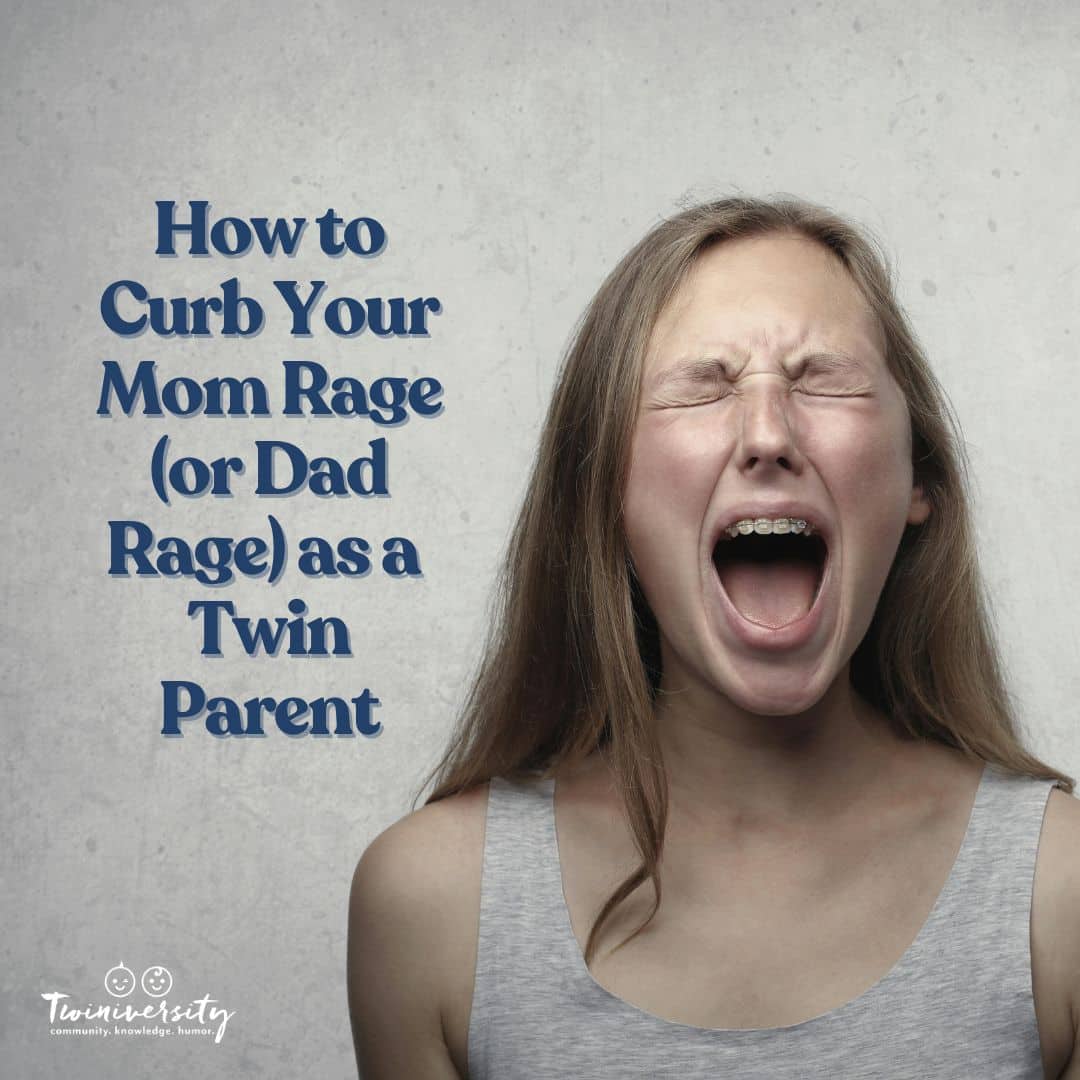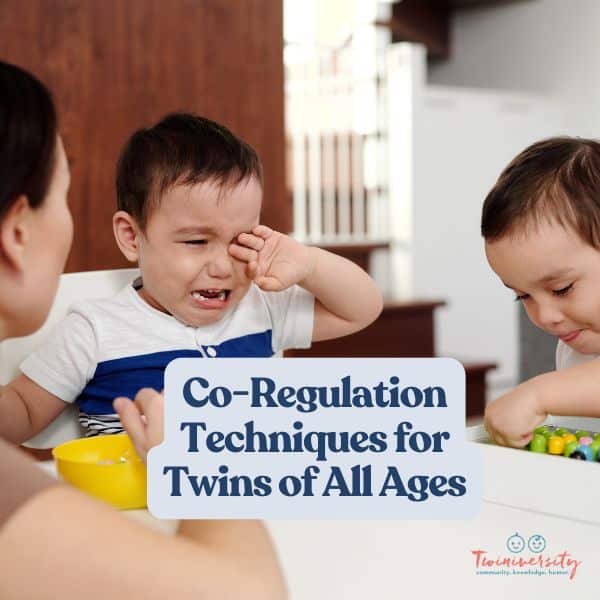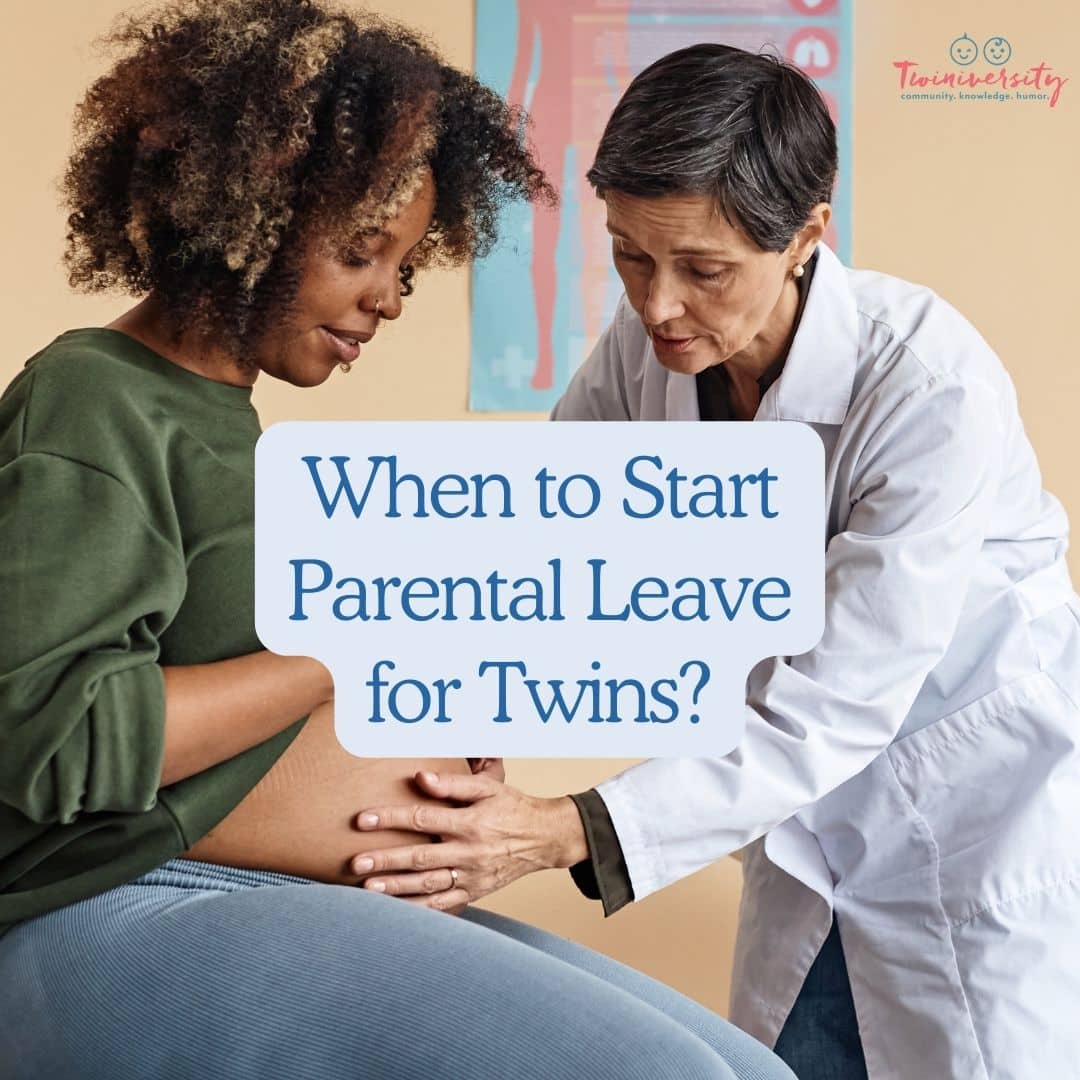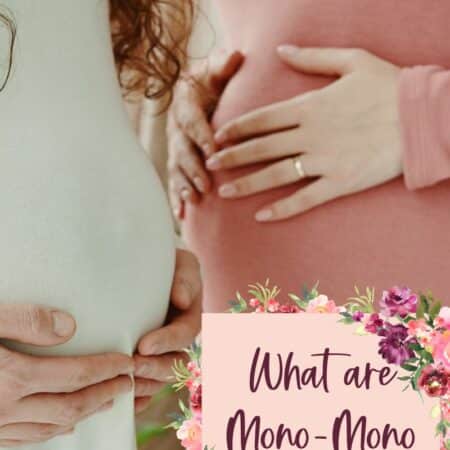
All content on this website, including medical opinions and any other health-related information, is for informational purposes only and should not be considered to be a specific diagnosis or treatment plan for any individual situation. Use of this site and the information contained herein does not create a doctor-patient relationship. Always seek the direct advice of your own doctor in connection with any questions or issues you may have regarding your own health or the health of others.
If you are expecting twins, you’ve probably heard terms like Di-Di, Mono-Mono, or Mono-Di. Maybe you’re like me and have no idea what these terms mean and how they are related to your twins. Let’s figure that out together! Mine as well start the rarest and most complicated types of twins: Mono-Mono (MoMo). So, what are Mono Mono twins?
Mono-mono twin is a term used to describe the condition where there are two babies in one womb, that share the same placenta, chorions, and amniotic sac. The term “mono” means one, so it’s referring to how many placentas are present and not how many fetuses. MoMo twins only happen in about 1% of monozygotic (identical twins) pregnancies.
So if Mono-Mono means one, why would you use this term to describe twins? This is where the term “twin (double)” comes in. Twin refers to two separate fetuses sharing the same womb. This can happen when two eggs are fertilized by different sperm cells, or if two embryos develop from a single egg cell.

How do Mono-Mono twins happen?
Monozygotic or identical twin pregnancies result from one egg splitting into two. MoMo twins occur when the splitting of the egg happens later (after the amniotic sac is formed) resulting in a shared placenta and amniotic sac. These factors, also make this type of pregnancy high-risk.
How are MoMo twins diagnosed?
MoMo twins are usually identified early on in the pregnancy by ultrasound. The best time to see this via ultrasound is within the first 14 weeks of pregnancy. This is due to the smaller size of the fetuses, allowing you to see the placenta and amniotic sac better.

What happens after diagnosis?
Your doctor will monitor you very closely once your pregnancy is diagnosed as monoamniotic.They will want regular readings on:
- Fetal growth
- Fetal heart rate and function
- Umbilical cord tangles and knots
- Amniotic fluid levels
What are the Chances of having a MoMo Twin Pregnancy?
MoMo twins are spontaneous and have no genetic factors at all. An embryo splitting is a random event that happens by chance, it doesn’t run in families. Genes are not involved and there’s no scientific evidence that being from a family with identical twins has any impact on your odds of having twins. Everyone has the same chance of having identical twins: about 1 in 250.
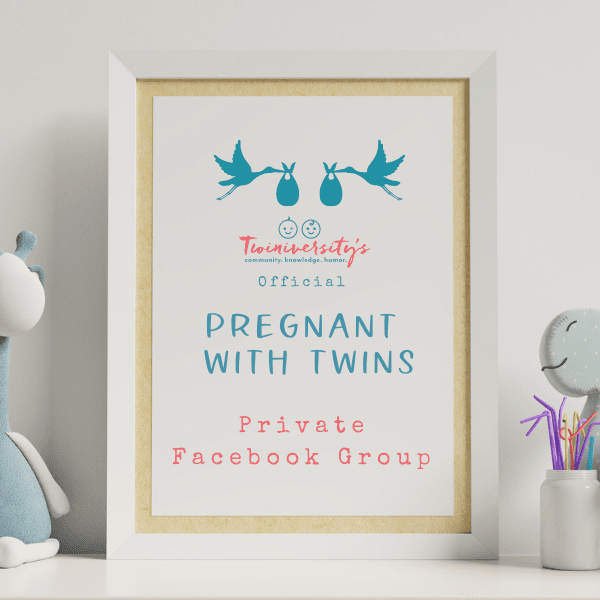
Did you know we have a FREE Facebook group just for expecting twin parents? Hurry and join today to find support from expecting twin mamas who get it!

Did you know we have a FREE Facebook group just for expecting twin parents? Hurry and join today to find support from expecting twin mamas who get it!
What are the risks of Mono Mono twins?
The more your twins share while in utero the higher the risk of the pregnancy.
Some possible risks of a mo/mo pregnancy include cord entanglement premature birth, amniotic fluid problems, and Twin to Twin Transfusion Syndrome (TTTS).
Cord Entanglement
There is nothing to separate mo/mo twins, which means their umbilical cords can become tangled over time. This can lead to very early twin deliveries if there are any concerns since an entangled umbilical cord can result in sudden death. Monoamniotic-Monochorionic twins generally have an in-utero mortality rate of approximately 50%.
Premature Birth
With a MoMo pregnancy, you can expect a cesarean delivery by 32 weeks, typically. MoMo twins are necessarily born at a premature gestational age, even in the absence of identified complications, due to the high-risk nature of the pregnancy.
Amniotic Fluid Problems
Too little amniotic fluid can limit bladder size and movement. Too much amniotic fluid can lead to an enlarged bladder and increase the chance of heart failure.

Twin to Twin Transfusion Syndrome (TTTS)
When the placenta is shared there is a risk that one twin will receive more nutrients and blood than the other twin. This can cause issues for both babies and may require monitoring, and resulting in premature delivery, or surgical repair in utero.
Twin Reversed Arterial Perfusion Sequence
Mono-Mono twins are at a greater risk of twin reversed arterial perfusion sequence (TRAP sequence). TRAP sequence results in one twin being developmentally normal while the other twin forms without a functioning heart and many other body structures. The twin without a heart cannot survive, and the other twin can experience heart failure because their heart is working for both.
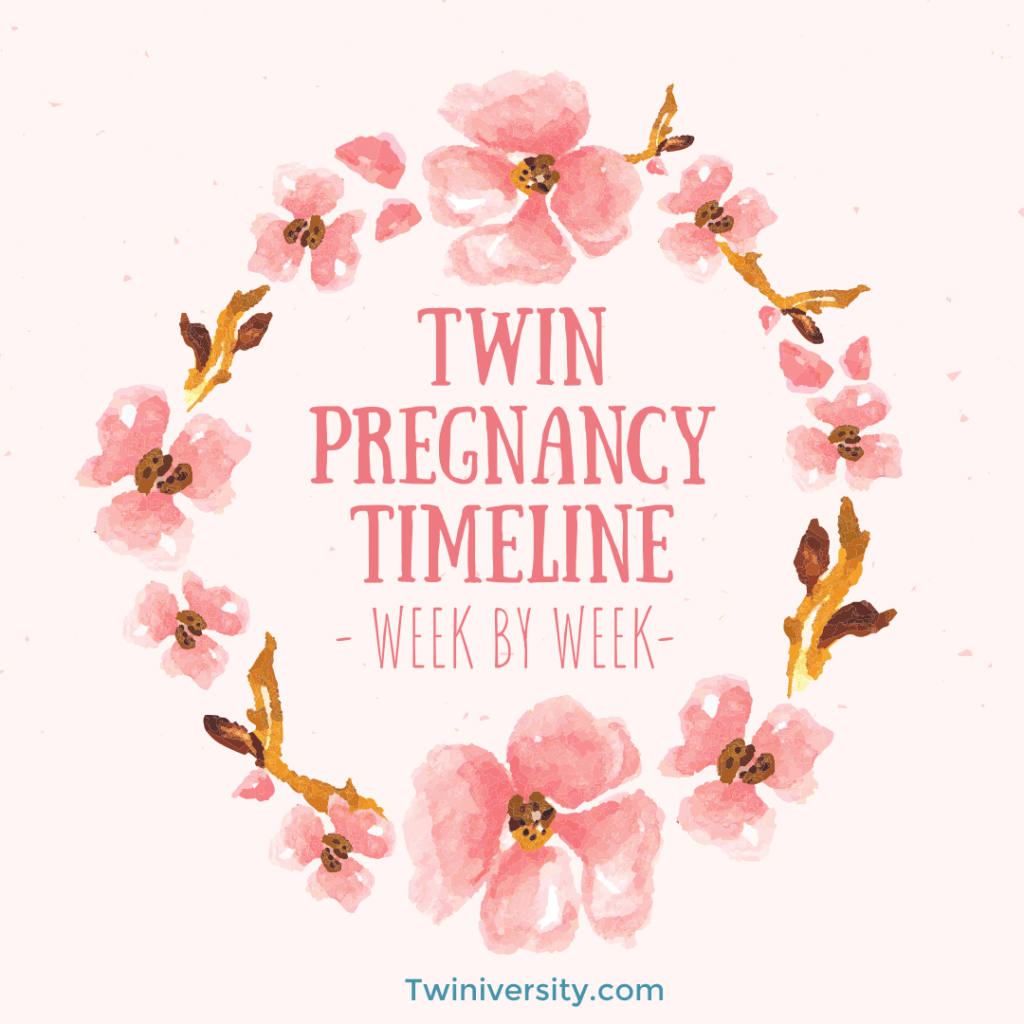
If you just heard that second heartbeat for the first time, or you know it’s been two for a while, you need to read our twin pregnancy week by week timeline to help you learn what happens week by week with twins. Click here to learn more… and while you’re at it, check out our expecting twins classes and twin parent coaching services.

If you just heard that second heartbeat for the first time, or you know it’s been two for a while, you need to read our twin pregnancy week by week timeline to help you learn what happens week by week with twins. Click here to learn more… and while you’re at it, check out our expecting twins classes and twin parent coaching services.
What Treatments are there for Mono-Mono Twins?
There is no way to prevent mo/mo twins, so doctors focus on monitoring once your MoMo pregnancy is confirmed. You can expect to be referred to an OB-GYN who specializes in high-risk pregnancies.
You may require hospital bed rest with continuous monitoring after a certain point in your pregnancy. To protect against complications like cord entanglement, mo/mo twins are frequently born via C-section and delivered early.
What to Expect during Labor and Delivery of Mono-Mono Twins
Due to the risk of cord entanglement in MoMo twins, delivery by cesarean section between 32 and 33 weeks gestation is recommended. It can be scary to think that you could intentionally have premies, but research shows that the risk of fetal death for MoMo twins is greater in utero than in a planned premature birth.

Final Thoughts
Although mono-mono twin pregnancies are extremely rare, they are not necessarily fatal, 70% of these types of twins survive. Remember to do what is best for you and your babies by seeing a doctor regularly.


